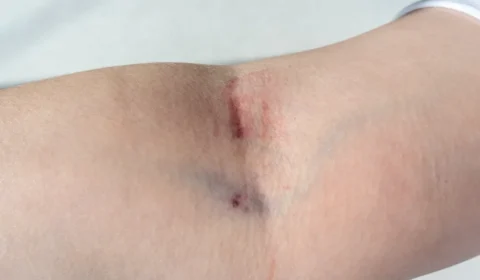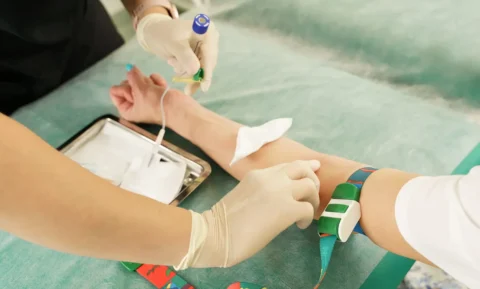If you want to expand the offerings of your aesthetic practice, one of the treatments you can add to your menu is platelet rich plasma therapy. Unlike other injectables, this is an all-natural form of facial rejuvenation that uses a patient’s own blood platelets to stimulate tissue regeneration which helps repair damaged and aged skin. Just like any aesthetic treatment, it’s important to undergo a PRP training course before doing any kind of procedure.
So what can you expect to learn in PRP therapy training? During a PRP course, you’ll learn about its different applications, preparation methods, extraction and injection techniques, and patient management. You’ll also know about the different combination therapies where you can use PRP to enhance the results of other cosmetic treatments like dermal filler injections.
Essential Things You Need to Know for PRP Training
Aside from Botox and dermal fillers, PRP therapy is one of the promising treatments for skin rejuvenation. Many years ago, PRP injections were first used for the treatment of sports injuries, joints, and other musculoskeletal conditions. But with the advancements in aesthetic medicine, it’s now also popular as a cosmetic injectable treatment.
Where Does PRP Come From?
The first thing you’ll learn in a PRP training course is how the injections are derived from a patient’s own blood. The human blood is an amazing reservoir of different cells, plasma, and platelets. These platelets are rich in growth factors that are necessary for wound healing, tissue repair, and cell regeneration.
When preparing PRP serum for injections, it’s important to separate the platelets from the other blood components. The PRP injections usually only consist of plasma and a high concentration of platelets. Some methods of preparation may have a small amount of white blood cells as it is suggested to provide better tissue healing.
How are PRP Injections Prepared?
There are different ways to prepare PRP solutions and it can depend on the type of kit and equipment that you have in your clinic. Here are some of the common separation techniques for PRP preparation that you need to know:
Gel Separator Method
This technique uses separator gel technology to isolate the platelets from the remaining red and white blood cells. With this system, the extracted blood sample is placed in a tube filled with a gel substance. While the tube is spinning in the centrifuge machine, the platelet rich plasma will float on top of the gel while the blood cells remain on one side. Although it effectively separates the platelets, it can result in a low platelet concentration after centrifugation.
Buffy Coat System
The buffy coat refers to the layer of white blood cells and platelets that have formed after initial centrifugation. The buffy coat layer is obtained when the blood sample is spun at a high speed in the centrifuge machine. The first spin usually results in three layers with the plasma at the topmost layer, the buffy coat layer in the middle, and red blood cells at the bottom.
If you want a pure PRP solution, you should transfer the plasma and buffy coat layer to a sterile tube. You can spin them again at a slower speed to further eliminate the white blood cells or use a leukocyte filtration filter.
Buffy Coat with a Second Spin
If you want a leukocyte-rich PRP injection, the blood sample will undergo two spins in the centrifuge machine. The first centrifugation is done at a fast speed to generate the buffy coat layer, and the additional spin is set at a slower pace to increase the platelet concentration without the red blood cells.
3 Common Uses of PRP Treatments
Platelet rich plasma therapy is a versatile procedure and it has many different uses in the field of aesthetic medicine. Some of the common applications of PRP injections today are:
Cosmetic and Facial Rejuvenation
Many facial aesthetic practitioners can administer PRP treatment to rejuvenate damaged skin and minimize the signs of aging. With its healing and regenerative abilities, PRP injections can be used to minimize wrinkles and fine lines, reduce dark circles, and improve skin tone and texture. It can also stimulate new collagen production to restore skin elasticity and firmness for a more youthful appearance.
PRP therapy can be given on its own but it can also complement other procedures such as microneedling and dermal fillers. When used with microneedling, the PRP solution is spread all over the face and the holes created by the micro wounds will help deliver the growth factors deeper into the skin.
Meanwhile, adding PRP with dermal filler injections can help stimulate the deeper tissues to produce more collagen and improve volume to provide more dramatic facial rejuvenation results.
Hair Loss Treatment
PRP can also be used for non-surgical hair restoration in patients with androgenic alopecia. The injections are usually placed on the areas of the scalp with visible thinning or small balding patches. With PRP hair restoration, you can stimulate the inactive follicles and prolong the hair cycle to promote new hair growth. This treatment can effectively slow down the rate of hair loss, increase hair density, and regrow a receding hairline.
Sexual Rejuvenation
Another popular use of PRP treatments is for sexual rejuvenation. The injections can help patients who are struggling with painful intercourse, erectile dysfunction, vaginal dryness, and reduced sexual satisfaction. The platelet rich plasma can help stimulate the tissues and improve blood flow to enhance one’s sexual health and pleasure.
Growth Factors and Their Role in PRP Therapy
A high concentration of platelets can contain multiple growth factor proteins that are beneficial for promoting tissue healing and regeneration. Here are some of the growth factors present in a PRP injection:
- Platelet-derived growth factor: encourages new cell growth and division
- Epidermal growth factor: stimulates different cell proliferation including the formation of fibroblasts
- Fibroblast growth factor: helps new skin cell growth and supports collagen production to minimize the appearance of wrinkles and other expression lines
- Insulin growth factor: stimulates cell growth and division
- Vascular endothelial growth factor: responsible for new blood vessel formation
- Keratinocyte growth factor: promotes the growth of new epithelial cells
Important Protocols in a PRP Procedure
As with any aesthetic courses, you’d also learn essential guidelines in preparation, injection proper, and patient management during platelet rich plasma training. It’s important to take note of these standard protocols to ensure a safe and comfortable PRP experience for your patients from start to finish.
What You Need to Remind Patients Before a PRP Treatment
Prior to the day of the injections, there are several instructions that you need to give to your patients. Here are some of the important pre-procedure reminders:
- Patients should stop taking blood thinning medications or supplements for at least a week before the treatment.
- During the consultation, ask if they are taking corticosteroid injections or steroid medications. Patients should discontinue the use of any corticosteroids for at least 4 weeks before the PRP injections.
- They should also minimize or stop their alcohol consumption for at least 72 hours prior to their PRP treatment.
- Ask about their medical history and make sure they don’t have any conditions that may be a contraindication for the application of PRP.
- For a PRP facial treatment, patients should come in without wearing any makeup and they should be informed to avoid touching or putting anything on the face after the procedure.
Reminders for PRP Injection Proper
On the day of the PRP procedure, you should make sure to use only clean and sterile tools for the phlebotomy and injection proper. During the blood draw, extract a small amount of blood from the patient’s arm. The average amount of blood needed is usually 10 to 15 mL, depending on the number of injection sites.
After extraction, place the blood sample in a centrifuge machine to get the ideal platelet concentrate for the serum. Before injecting the PRP solution, you can apply a topical numbing cream to minimize the pain and discomfort during the procedure. Slowly and carefully inject the PRP serum into the treatment sites.
Who are Good Candidates for PRP Injection?
Although PRP is mostly a safe and effective treatment, it may not be the best choice for certain patients. Before the procedure, you should have a consultation with the individual and check if they’re a good fit for the treatment. Those with the following medical conditions may not be an ideal patient for PRP:
- Low platelet counts
- Chronic liver disease
- Active infection
- Weakened immune system
- Pregnant or breastfeeding
- Have an allergy to lidocaine and other compounds needed for platelet activation
Why It’s Important To Undergo a PRP Training Course
It’s necessary to finish a PRP course in order to be qualified to administer the procedure in your aesthetic practice. Anyone can sign up for hands-on training on PRP treatments including registered nurses, nurse practitioners, aesthetic physicians, and board certified medical doctors.
The course will help you have a better understanding of the PRP procedure, provide knowledge of the standard safety protocols and preparation guidelines, and equip you with the best injection technique for effective treatments. This will also help you reduce the risk of complications and adverse effects during and after the procedure.
Upon successful completion of the training course, you should be able to practice and implement the PRP method for your patient’s skin rejuvenation and hair restoration needs.
Get PRP Training Video Courses from FACE Med Store
Platelet rich plasma therapy is an autologous treatment that can help address a wide variety of aesthetic concerns without any invasive surgery or downtime. However, it’s important that you have completed a full training course on PRP to be able to perform the procedure safely and effectively on patients.
At FACE Med Store, we offer live video courses showing how to prepare and use PRP injections for sexual rejuvenation, facial aesthetics, and hair restoration. We also provide high-quality supplies and tools to help your practice administer different medical and cosmetic procedures. To inquire about our stocks, or learn more about our offers, contact us today.






